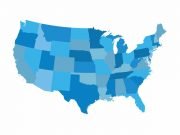Job postings in the United States dropped in April but remained considerably close to record highs, implying that salaries would continue to grow as businesses compete for employees. This has been a contributing factor in inflation being uncomfortably high for as long as it has.
The Labor Department’s Job Openings and Labor Turnover Survey (JOLTS) report, released on Wednesday, also revealed a record low in layoffs, highlighting the tightness of the labor market. In order to achieve its 2% inflation objective, the Federal Reserve is attempting to bring labor demand and supply back into balance without letting the unemployment numbers rise by too much. Also reported on Wednesday were the ISM Manufacturing Index and the Fed’s “Beige Book.”
What should we take away from Wednesday’s JOLTS report and other essential government statistics? Get the details you need in the full article here:
Today, there are few indicators that the U.S. Federal Reserve’s aggressive monetary policy is dampening overall demand. Other figures revealed that factory activity increased in May as demand for goods stayed high. Increasing interest rates and toughening economic policies have fueled worries of an impending recession, but the findings have alleviated such anxieties for some. Christopher Rupkey, a New York-based analyst, pointed out that “Today’s reports show the economy is not slowing appreciably and the labor market remains very strong.”
As of the last day of April, job opportunities fell by 455,000 to 11.4 million, indicating a decrease in labor demand. In March, the number of job openings was revised to show us a new high of 11.855 million, up from 11.5 million. In April, the number of job vacancies was in line with economists’ estimates. The number of job openings in the healthcare and social-aid industries decreased by 266,000. There were 162,000 fewer job opportunities in the retail sector, while available jobs in the lodging and food services industries fell by 113,000.
Meanwhile, there were 97,000 vacant positions in the transportation, storage, and utilities sector. Nondurable goods manufacturers had a 67,000 rise in job postings, while long-lasting goods manufacturers saw a 53,000 increase in available positions. The proportion of job opportunities fell to 7.0% in April, down from 7.3% in March.
Last month, Fed Chairman Jerome Powell described job opportunities as “extraordinarily high” and pointed out that “there’s a path by which we would be able to have demand moderate in the labor market and therefore have vacancies come down without unemployment going up.” In April, the unemployment rate remained at what’s now a two-year low of 3.6%.
Since March, the Fed has boosted its policy interest rate by 75 basis points. At its June and July meetings, they will likely raise the overnight rate by half a percentage point. On Wednesday, the Fed’s Beige Book report confirmed labor market tightness, and hints of gradual relaxation are appearing. According to the research, just one district observed a slowdown in employment creation.
There were 1.92 job vacancies for every jobless individual in April, down from 2 in March. According to economists, it is plausible that corporations were and are posting jobs on several sites while also making sure that the listings appear even after the position has been filled.
The number of new hires declined by 59,000 to 6.586 million. The hiring rate remained constant at 4.4%. The number of job vacancies was 73% higher than the number of new employees. Even when the jobless who want to work but aren’t seeking employment are included, the gap between available jobs and available employees remains significant. From 3.6% in March, the job-worker gap has narrowed to 3.3% of the labor force.
In a third report issued Wednesday, the Institute for Supply Management (ISM) said that its indicator of national manufacturing activity rose to 56.1 last month from a reading of 55.4 in April. A rating above 50 suggests that manufacturing, which contributes to 12% of the U.S. economy, is expanding. The survey came after a study last Friday, which showed that consumer spending increased significantly in April. Fears of an economic slump have seized the country due to the Fed’s rate rises, increasing Treasury rates, and plummeting asset prices.
Even when spending shifts back to services like vacation and dining out, demand for products remains strong. As the pandemic hindered transportation, consumer spending increased, even though transportation equipment manufacturers reported that the chip scarcity was only worsening. Something that could be considered a silver lining is that manufacturers have recently indicated that supply chain concerns have only led to thoughtful and forward-looking adjustments in business strategy.












